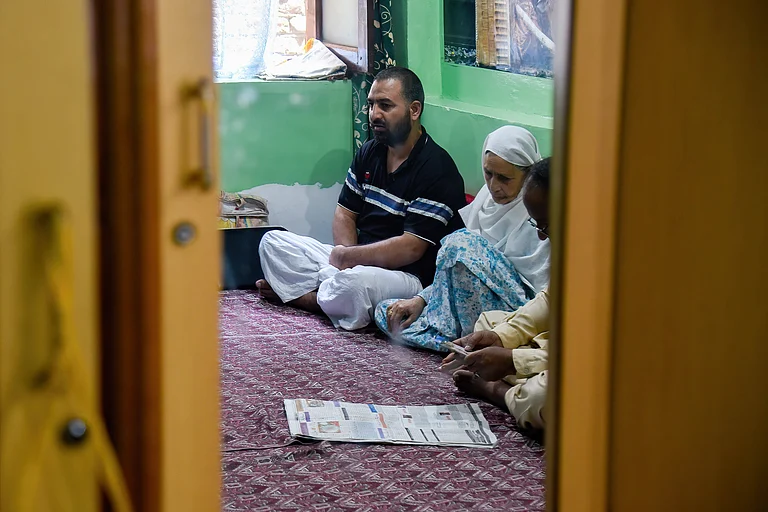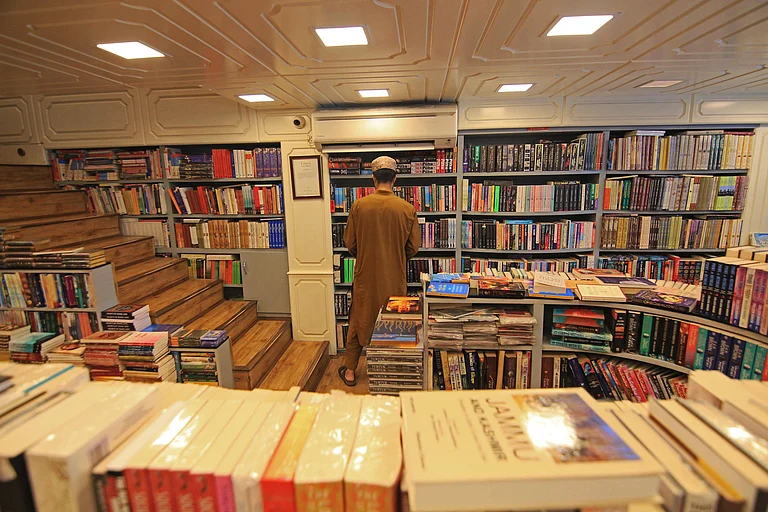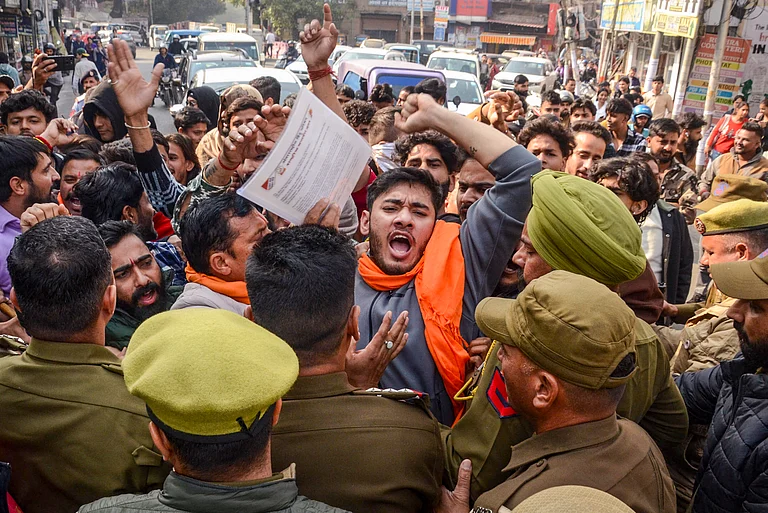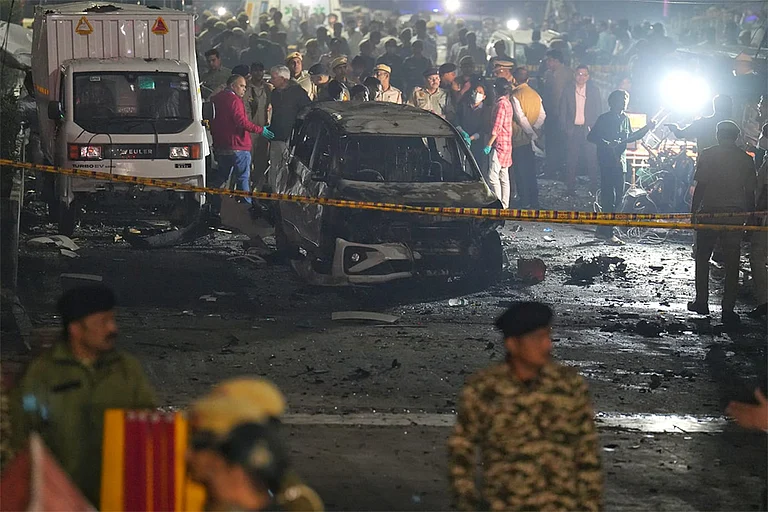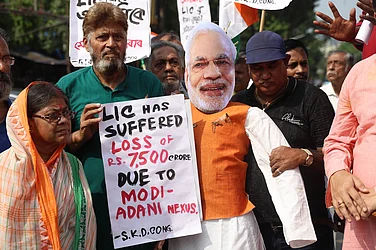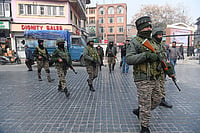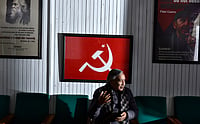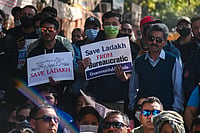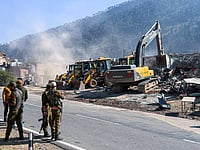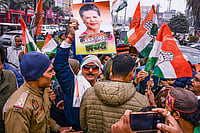In Kashmir, before the abrogation of Article 370, there was unanimity across the political spectrum that 22 people who fought against the rule of the monarchs in 1931 were martyrs. Both the separatist and the mainstream politicians would pay homage to them.
Maharaja Hari Singh was seen as a dictator even as he chose to remain independent from 15 August till October 26, 1947, and joined the Indian Union by signing the Instrument of Accession only after the tribal invasion by Pakistan.
After the abrogation of Article 370, the Maharaja has been lifted as a hero by the Bharatiya Janata Party (BJP) government in what Kashmiri politicians see for securing the Hindu vote bank.
The BJP, which had only a few members in the Legislative Assembly, rose to power in Jammu and Kashmir after the polarisation following the protests against the transfer of land to Shri Amarnath Shrine Board (SASB in 2008) and has its vote bank concentrated in the Hindu majority Jammu region, where Dogra rulers are eulogized.
In contrast, in Kashmir, Dogra rules are being loathed on which has shaped the politics of the region over Jammu versus Kashmir, as the leaders from Jammu have talked of being discriminated against by the Kashmiri leaders and vice versa.
The Controversy
Following the abrogation of Article 370, there are two narratives now which have taken shape. According to the Kashmiri leaders, the Dogra rulers would subject people to harsh treatment of forced labour, and poverty as jobs were scarce. The ruling National Conference, which was originally named Muslim Conference by its founder Sheik Mohamamd Abdullah, has based its politics around the 1931 uprising against the Dogra rule.
According to Kashmir leaders, the economic conditions in Kashmir were poor during the feudal times, and famines were also witnessed here. “The martyrs of 13 July 1931 were not ordinary men. They were symbols of resistance, brave souls who stood unarmed against tyranny. Their sacrifice became the foundation of J&K’s long and painful struggle for justice, dignity, and representative governance,” said the People's Democratic Party (PDP).
Official Historical Narrative
The official narrative, which has been recorded, through the textbooks issued by the Jammu and Kashmir state board of school education, has described the founder of the Dogra rule Maharaja Gulab Singh, as a visionary who took many steps for the "reformation and reorganisation of the administration. "
“Some of his important contributions were the streamlining of the faltering economy besides certain reforms in finance, agriculture and revenue departments,” notes JKBOSE in its Class 8th textbook. “The reign of Maharaja Ranbir Singh (1856-85) is considered progressive and peaceful and celebrated for cultural excellence and composite social fabric. However, this period was marked by consistent colonial intervention in the internal affairs of the state which was effectively challenged by the Maharaja. His carefully devised policies made great improvements in the affairs of administration. Maharaja Ranbir Singh reorganised the state and introduced civil and criminal code of law in the form of Ranbir Penal Code on the pattern of Macaulay Code, for the delivery of regular, prompt and cheaper justice. Maharaja subdued the ever-rebellious trans-Himalayan tribal territories of Hunza, Nagar and Gilgit. Further, the entire state was covered with the network of postal and telecommunication services in 1877 CE extending up to the frontier districts of Gilgit and Askardu,” it added.
Kashmiri Pandit Narrative
Kashmir Pandits believe that the day was a black day in the history of Jammu and Kashmir. Ashwani Kumar Chrungoo, senior BJP and Kashmiri Pandit leader, said that the Muslim Conference “spearheaded the revolt against the Maharaja in 1931 and generated hatred towards the Hindu minorities of Kashmir. With this were founded the concepts of Muslim fundamentalism and Muslim majoritarianism that later took the political shape in the 1931 carnage against the Hindu minorities.”
"Maharaja Hari Singh represented the Association of the Princely Ruled States of India in the Round Table Conference in London in 1930, wherein he pleaded the cause of Independence from British occupancy. With this got initiated the conspiracy against the Dogra Maharaja by the British and the Muslim elite in the State and were thereupon used by the British against the Maharaja and the Dogra rule.”
He said that 13th July is the day when the minority Hindu community became victims of the first attempt at genocidal acts of the 20th century in Kashmir against them. “The British government, after the Round Table Conference in London, decided to weaken the position of Maharaja of Kashmir, Hari Singh. The Maharaja, as the representative of the Princely Ruled States of India in the Conference, took a very strong position against the British Raj in India. The British propped up an agent (who was already in their circuit), Abdul Qadeer, a non-state subject from Peshawar, and assigned him the job to incite the Muslim population of Jammu and Kashmir against the Maharaja. He did his job meticulously on various fronts," said Chrungoo.
“There were other communal forces also active in the Valley who believed that Kashmir was deprived of the 'Muslim rule' because of the Kashmiri Pandits, and therefore, they ought to pay a price for being the nationalists. Since Kashmiri Pandits belonged to the Hindu fraternity and the Maharaja was also a Hindu, therefore, it was assumed that the Hindu community should be held responsible for the continuance of the Maharaja’s rule in Kashmir. A conspiracy was hatched to loot and burn the Hindu houses and property in Srinagar city
A 'rebellion’ was orchestrated in the Central Jail at Hariparbat, Srinagar on 12-13 July 1931, which was supported and incited by Abdul Qadeer from within and outside the Jail premises. Thousands of Muslim conference workers and other activists joined the prisoners who broke out of the jail and went berserk.
The mobs under the supervision and leadership of social, religious and political activists, looted Hindu properties and houses at Vicharnag, Maharaj Ganj (the hub of business activity), Amirakadal, Hari Singh High Street and parts of Bohrikadal. In Kanikoot Village (now in Badgam district) Hindus were mercilessly beaten, their properties vandalized and the members of one family were thrown out of the windows of their three-storey house and brutally killed.”







